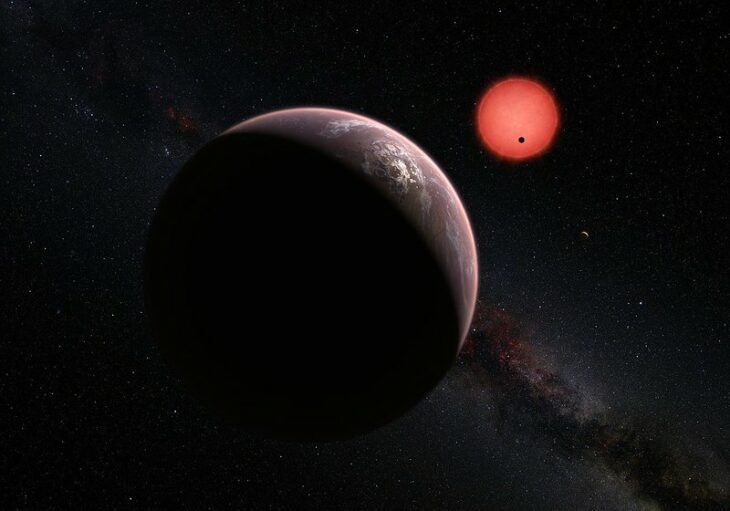Denis Villeneuve’s sci-fi epic Dune: Part Two was a smash hit in American theaters in the spring of 2024. The film depicts the struggle for power among noble houses on the desert planet Arrakis. But if humanity ever becomes a sprawling empire over thousands of worlds in the distant future, as depicted in the Dune films and novels, how common would desert planets or planets entirely devoid of water be?
To look for these planets, the most common star type would be a good place to start. Astronomers have observed that small, dim, cool, and reddish stars called red dwarfs make up most of the Galaxy’s stars. Astronomers studying planets around stars besides the Sun estimate every star has at least one orbiting planet. Around half the planets around red dwarfs are small and rocky with a composition like Earth’s, referred to as terrestrial planets. Therefore, the most common type of Earth-like planets would be around red dwarfs.
For decades, astronomers have thought these planets wouldn’t have liquid water on their surfaces because red dwarfs are cooler than the Sun. To have the temperature range to keep liquid water, planets around cooler stars have to orbit closer to their host than planets around warmer stars. However, unlike stars with a steady brightness like the Sun, red dwarfs start hotter and brighter than they end up for most of their lives.
Terrestrial planets form with around 15 to 70 times Earth’s water, most of which comes from stray ice comets. But the heat of young red dwarf stars evaporates the water on these planets, transforming it from liquid to gas in the atmosphere. In the planets’ atmospheres, intense starlight breaks water vapor into oxygen and hydrogen, in a process called photolysis. The heavier oxygen stays on the planet while the lighter hydrogen floats away. As a result, astronomers estimated planets around red dwarf stars lose several tens of times Earth’s oceans’ worth of water over their first billion years.
A team of scientists in Japan led by Yo Kawamura challenged the paradigm that planets around red dwarfs should lose all their water this way. They proposed that 2 factors could greatly reduce the water loss in the early years of a planet orbiting a dwarf star. The first is that while water is broken apart by intense light in a planet’s atmosphere, some water is produced in the atmosphere when reactive free hydrogen mixes with hydrogen superoxide. The second is that the breakdown of water in the atmosphere produces oxygen gas, which shields water from further intense light.
Kawamura’s team used software called the Photochemical and RadiatiOn Transport model for Extensive USe or PROTEUS to test whether planets would lose less water when taking these 2 factors into account. They calculated water loss on an Earth-like planet with a water vapor-filled atmosphere and a massive ocean. It orbited about 2% of the distance we orbit the Sun to a dwarf star based on TRAPPIST-1, shown in the featured image above. They assumed the only chemical reactions that occurred in the planet’s atmosphere were between hydrogen and oxygen. Kawamura and the team ran the model once to see if their results deviated from earlier studies, and how they varied with altitude in the planet’s atmosphere.
The team found the model planet’s atmosphere turned out similar to what they expected. It included a very high layer where starlight broke water apart into free hydrogen and oxygen atoms, and the hydrogen escaped into space. Below that, a layer of oxygen gas formed, mitigating the starlight intensity at lower altitudes where free hydrogen mixed with hydrogen superoxide to produce more water through chemical reactions.
In the end, they calculated the amount of water lost to space was only around 7 times that of Earth’s oceans. This meant that even if a terrestrial planet started out at the low end of the water range it could still have 8 times Earth’s oceans worth of water remaining after its first billion years in existence. The researchers suggested their results meant rather than a galaxy filled with Earth-like planets almost devoid of water, space could harbor worlds with vast oceans orbiting dwarf stars. In other words, future humans might likely find an Arrakis, but a Caladan isn’t beyond the realm of possibility. Still, they indicated future researchers should test their model of planetary water loss with different atmospheric compositions, alternative cooling processes, and water trapped in a planet’s rock and magma.


